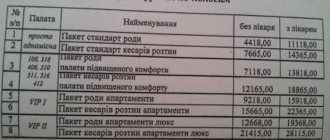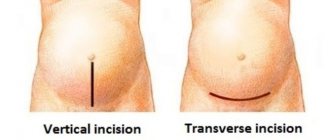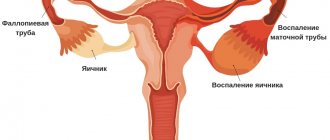Caesarean section is a forced delivery measure. Surgical section of the abdominal cavity should be used only when natural childbirth is impossible, or its consequences for the mother or baby are too traumatic. For example, with severe myopia as a result of labor, the mother may lose her sight (however, such an outcome is not necessary, but only possible). Or, with a narrow pelvis, the child’s brain may be injured when passing through the birth canal (which is also not necessary). But if you cannot do without a cesarean section, then complete information about this operation is necessary. Let's look at how long a caesarean section can last, and what the difference is between general anesthesia and epidural anesthesia.
- 1 Caesarean section under general anesthesia: how long does the operation last?
- 2 Caesarean section under epidural anesthesia: duration in time
- 3 Caesarean section with spinal anesthesia
- 4 Consequences
Like any other operation, a caesarean section is performed under anesthesia. The choice of method for reducing sensitivity (general or local anesthesia, epidural or spinal catheter insertion) depends on the availability of a qualified specialist, anesthetic drugs and the condition of the woman’s body. The fastest operation will be using general anesthesia. Longer - caesarean section with epidural anesthesia.
What is a caesarean section?
A Caesarean section is a surgical operation in which an incision is made in a woman's abdomen, the uterus is opened, and the fetus is removed from it. When the baby has already been born and the placenta has separated from the walls of the uterus, the surgeon sews up the incisions. After this, the operation is considered completed.
Many women, when preparing for planned surgery, wonder how long such an operation takes. This question cannot be answered unambiguously. The time the operation may take is approximately 25-120 minutes. It depends on how it will go, whether difficulties will arise, what are the reasons for choosing delivery and on many other factors.
How does the operation proceed?
If an anesthesiologist performs epidural anesthesia, the site of the operation (incision) is hidden from the woman by a septum. But let's look at how a caesarean section is performed. The surgeon makes an incision in the wall of the uterus and then opens the amniotic sac. After which the child is removed. Almost immediately, the newborn begins to cry heavily. The pediatrician cuts the umbilical cord and then performs all the necessary procedures on the child.
If the young mother is conscious, the doctor immediately shows her the baby and may even let her hold it. After this, the child is taken to a separate room for further observation. The shortest period of the operation is the incision and removal of the child. It only takes 10 minutes. These are the main advantages of a cesarean section.
After this, doctors must remove the placenta, thoroughly treating all the necessary vessels so that bleeding does not start. The surgeon then stitches up the cut tissue. The woman is placed on a drip, giving a solution of oxytocin, which speeds up the process of uterine contractions. This phase of the operation is the longest. From the moment the baby is born until the end of the operation, approximately 30 minutes pass. In terms of time, this operation, a caesarean section, takes 40 minutes.
The qualifications of the surgeon and its influence on the course of the operation
The outcome of the operation, as well as the time it takes, will largely depend on the skill of the surgeon.
The doctors' technique is honed during operations: the more operations a surgeon has performed, the more perfect his actions will be.
Both the doctor’s experience and his ability to learn are important. Medicine is steadily improving, and new methods are being developed. The duration of the operation directly depends on how the doctor masters new methods of its management. The experience of the gynecologist also matters, but when choosing a specialist who will carry out the intervention, this factor most often will not be decisive.
Carrying out the operation again
Each surgical intervention is a considerable stress for the body. The reasons for this are a large loss of blood, which requires replenishment and puts a strain on the cardiovascular system, and damage to the tissues of the abdominal cavity and abdominal muscles. Muscle tissue takes a long time to recover from any damage, since it loses the ability to contract normally.
The body reacts quite violently to such extensive damage, directing all its forces to compensate for lost resources and restore. Often this becomes the reason for the onset of the adhesive process. The connective tissue begins to grow, and a repeat cesarean section will take longer than the first. This happens because the resulting adhesions complicate access to the uterus.
In such cases, it is impossible to say for sure how long the operation will last.
Basically, everything will depend on the number of previously performed abdominal operations and how developed the adhesions are.
Regardless of the state of the adhesions, the obstetrician will remove the child in the third or fifth minute after the start of the operation.
The faster the baby is outside, the less effect the medications will have on his body.
How long can a caesarean section last in case of complications?
The duration of a cesarean section will also depend on various complications that may arise during the process:
- injury to nearby organs (damage to the intestinal walls, bladder);
- sepsis, endometritis;
- bleeding due to inadequate contraction of the uterus;
- failure to contract may cause the uterus to be removed.
Of the listed complications, some may develop in the postoperative period, while others may arise directly during the intervention. For example, if the bladder is damaged, the process will last at least two hours.
In this case, a urologist will be invited to the operating room - he will deal with the restoration of the damaged organ.
One of the most dangerous complications is hypotonic bleeding. Until he is stopped, no one can predict the time of the operation. The uterus, stretched during pregnancy, should contract after the fetus is removed - this will compress the blood vessels and reduce blood loss. To restore the contractility of the uterus, methods such as intrauterine administration of oxytocin, stitching, curettage of the uterine cavity, and the like are used. If all the measures taken by surgeons are ineffective, the question of the need to remove the organ is raised. Sometimes this is the only way to save the patient’s life.
Indications for caesarean section
When for some reason a mother cannot give birth to a child herself, she is prescribed an operation.
They can be observed on the mother’s side when labor threatens her life, and on the child’s side.
Preparation for a planned caesarean section begins when symptoms are present:
- if the placenta is the placenta, its entrance is blocked, this is fraught with bleeding and serious consequences for the woman and child;
- . Normally, this should happen after birth;
- weak scar on the uterus after various types of surgical interventions. An ultrasound of the scar is performed to diagnose its condition. Uneven contours of connective tissue and scar thickness less than 3 mm are indications;
- several operations. In this case, natural birth is contraindicated due to the possibility of uterine rupture during childbirth;
- anatomical structure of a woman. II-IV degrees;
- the presence of neoplasms and pelvic defects that interfere with the normal passage of the child;
- the presence of pathology and a large fetus, starting from 4 kg;
- in acute form;
- , which cannot be treated, the disease causes severe symptoms with consequences for the baby and mother;
- , vessels with pronounced manifestations, myopia;
- cicatricial narrowings that interfere with the normal passage of the child;
- plastic surgery;
- severe perineal rupture in previous births;
- , during natural childbirth bleeding may occur;
- transverse presentation of the fetus;
- fused double;
- finding a fetus weighing more than 3600 g and less than 1500 g in the pelvis;
- artificial insemination of the mother in the presence of other complications;
- hypoxia or malnutrition of the fetus in chronic form;
- incompatibility ;
- carrying a child longer than expected in combination with another illness;
- cancerous tumors;
- with external blisters on the genitals.
Also present are those that develop during labor.
Planned and urgent operations: timing
Caesarean sections are performed both planned and emergency. How urgent the operation is will depend on many indications.
When a pregnant woman visits an antenatal clinic, the gynecologist collects a detailed medical history, which gives an idea of what plan to follow during the further course of the pregnancy and how to carry out the birth itself. For example, if a woman has heart problems or retinal detachment, the doctor will insist on a planned cesarean section - this will eliminate the period of pushing during childbirth.
Planned surgical intervention is also carried out when the natural birth of a baby through the birth canal seems dangerous or impossible. This can happen with multiple pregnancies, incorrect position of the baby in the uterus, incorrect location of the placenta and other similar situations.
Urgent, that is, urgent, type of operation is carried out mainly in case of disturbances in labor, placental abruption, or oxygen starvation of the fetus. If surgery is performed for such reasons, they will try to reduce its time as much as possible - it often happens that every minute is precious to save the life of the child or his mother.
Oddly enough, many women are absolutely sure that a cesarean section will be much better than a natural birth.
This is fundamentally wrong: any abdominal operation, no matter how long it lasts, poses a considerable risk to health. A long rehabilitation period will be required, the body will lose more strength, which will need to be replenished. A caesarean section can be performed only due to serious vital indications, but not at the request of the patient.
Starting from the 38th week, pregnancy is already considered full-term. It is from this moment that a woman begins to prepare for the process of bringing a baby into the world. However, not all women can survive natural childbirth. Therefore, for a number of reasons, it is prescribed. Examples of indications for its implementation may be a clinically narrow pelvis, weakness of labor, premature placental abruption, etc.
What is a caesarean section?
This surgical intervention involves an incision in the anterior abdominal wall, through which the fetus is removed from the mother’s womb. In addition, during this operation the integrity of the uterus is violated by cutting its wall.
After successful surgery, surgeons restore the reproductive organ and the walls of the abdominal cavity, sewing them together with special threads.
What is the duration of this operation?
The question of how long a caesarean section lasts interests women, as a rule, at the stage of preparation for a planned operation. It is impossible to give an unambiguous answer to this, since the duration of such surgical intervention depends on many factors. If you try to say how long a caesarean section operation takes, then on average it takes from 25 minutes to 2 hours.
So, first of all, the professionalism of the surgeon determines not only how long the cesarean section operation will last, but also the success of its outcome. As in any specialty, mastery comes with experience. Consequently, the more such operations a surgeon has performed, the less time they take, because gradually all actions are honed, almost to the point of automatism.
Also, how long it takes to perform a caesarean section also depends on the type of pregnancy. So, in case of multiple pregnancy (2 or more fetuses), it takes at least 1 hour. The duration can also be increased by the fact that the fetus is positioned incorrectly, i.e. has the wrong So, for example, with a breech presentation (when the baby’s butt is facing the entrance to the small pelvis), the doctor, before removing the child, needs to make sure that the baby’s pelvis, along with the legs, is outside the bones of the mother’s pelvis. This usually requires a wider cross-section, which also takes some time.
How long does it take to have a repeat caesarean section?
Like any abdominal operation, a caesarean section is a kind of stress for a woman’s body. In this case, blood loss during such a surgical intervention is about 350 ml. In addition, damage occurs to the tissues of the abdominal cavity and often to the organs located in it.
These factors undoubtedly have an impact on the body. Therefore, the duration of a repeat cesarean section may be longer, due to a number of processes. For example, existing adhesions formed after the first surgical intervention can greatly limit access to the uterus. Therefore, the surgeon will need more time than usual.
It follows that the duration of reoperation depends in part on how much surgery a woman has had in her history.
Thus, even experienced surgeons sometimes find it difficult to predict the duration of a cesarean section. That is why the anesthesiologist is constantly present during the operation and is in a state of readiness to, if necessary, increase the dose of anesthesia, and thereby prolong the woman’s state of anesthesia.
A full-term pregnancy, that is, when the term has reached thirty-eight weeks, must be resolved safely.
And if, for some reason, usually related to health, natural childbirth is impossible, a caesarean section is prescribed.
Indications for cesarean section
Such health reasons include, in particular, weakness of labor, a clinically narrow pelvis, premature placental abruption, etc.
Postoperative recovery
After a caesarean section, as after any surgical intervention, the woman’s body must recover. The speed of recovery after surgery depends on the body’s ability to heal itself. After surgical delivery, the mother returns to her normal state slowly. The patient recovers from anesthesia within 1.5 - 2 hours. After epidural or spinal anesthesia, a woman may have poor sensation in the lower part of the body for about 24 hours.
During the first day, it is contraindicated to eat food or carbonated water. Only from the second day are low-fat fermented milk products, liquid first courses and porridges introduced into the diet, and later boiled minced meat. After a week, you can switch to your normal diet.
The state of health may worsen in the first days after the operation, so the woman is under the supervision of doctors. Normally, a woman in labor experiences pain in the lower abdomen. If the intensity of pain increases, the location changes, or cramping pain appears, you should immediately inform your doctor.
In addition to the usual symptoms, the patient may experience side effects of anesthesia for three days: headache, anxiety, irritability. This condition is sometimes accompanied by attacks of vomiting, coughing, or insomnia. You should not make sudden movements, which may cause the seams to separate. It will take more than one month for complete recovery. Intimate relationships are prohibited for 40 days.
Breastfeeding promotes rapid healing of wounds and restoration of the body after childbirth.
How is a caesarean section performed and how long does it last?
During a surgical procedure, which is a cesarean section, an incision is made in the abdominal cavity, then the uterus is opened and the living fetus is removed from it. After separation of the placenta, the integrity of the uterus and abdominal walls is restored, and this completes the operation. A cesarean section operation lasts from twenty-five minutes to two hours, which is determined by the complexity of the procedure.
The professionalism of the surgeon determines not only the result of the operation, but also its duration. The more successful operations a gynecologist surgeon has performed, the more advanced the technique of performing operations he has. In addition, to maintain high professionalism, a self-respecting obstetrician-gynecologist is obliged to constantly master new techniques, which are improved every year.
Caesarean section, like any abdominal operation, is a significant stress for the body. Blood loss during this surgical procedure is at least a third of a liter, which must be compensated by the cardiovascular system. In addition, during surgery, including the abdominal muscles. Muscle tissue takes quite a long time to recover after damage, since it is not able to contract fully. The body reacts very energetically to this kind of global damage, trying to correct the situation, and thereby causes the rapid development of the adhesive process, in which the response to damage to tissues and organs is the proliferation of connective tissue. Therefore, the time required for, for example, a repeat cesarean section is noticeably longer than during the first operation, since the resulting adhesions make access to the uterus difficult. It is very difficult to predict the time of the operation in this case, and much depends on the number of abdominal operations performed previously and the level of development of adhesions.
In addition, complications that arise during the procedure may lengthen the cesarean section operation. These may include sepsis and endometritis (septic complications), bleeding due to poor contraction of the uterus, damage to the intestines, bladder wall, other neighboring organs, or removal of the uterus when it is completely incapable of contracting - atony.
A number of such complications develop after surgery, while others appear during surgery. If, in particular, the bladder is damaged, the duration of the cesarean operation will be more than two hours, since a urological surgeon will have to be invited to the operating room to restore the integrity of this damaged organ during the operation itself.
The most dangerous complication of the operation is hypotonic bleeding. Here the operation will last until the bleeding stops completely. To accomplish this task, a variety of methods are used, but if they do not give the desired result, the question of organ removal is raised, and in many cases this is the only way to save a woman’s life.
It should be noted that a caesarean section can be either urgent or planned. It all depends on the evidence. In particular, if there is a heart defect, the obstetrician-gynecologist recommends a planned cesarean section to eliminate the pushing period of labor.
Emergency (urgent) caesarean section is usually carried out in cases of labor disruption, placental abruption and similar cases. In this case, the duration of the caesarean section should be minimal; here every minute is important to save the lives of the mother and child.
How long a cesarean section operation lasts is a very important factor by which the success of the operation, the skill of the surgeon, the risks for the child and possible complications for the mother are judged. To understand this topic well, you need to study the literature for medical students. But for future mothers, the brief but succinct information presented on this page on the topic of preparation for surgery and the factors influencing how long a caesarean section lasts in women will be sufficient.
Let's start with a planned operation. A woman is prepared for it 1-2 weeks before the expected date of birth, if there is no reason to suspect an earlier onset of contractions or rupture of amniotic fluid, there is no threat of premature birth. The woman is admitted to the pregnancy pathology department for observation. If this is done for several days, then little preoperative preparation is carried out. By the way, its presence or absence also affects how long a caesarean section lasts and how quickly the woman will undergo the operation. This preparation consists of intravenous drips (droppers) of sodium chloride (saline) and Piracetam injections. This preparation is carried out with the aim of saturating the tissues with fluid in anticipation of the large blood loss that comes with a rather difficult operation for a woman, and to improve cerebral circulation. By the way, this long-term preparation is not at all necessary; IV drips are often placed immediately before, during, or immediately after surgery.
A day before the operation, the woman is told about the necessary diet. Lunch should not be late and light, for example, low-fat liquid soup or porridge. For dinner, it is advisable to limit yourself to sweet tea. Before going to bed, the woman is given an enema and given a sleeping pill to relieve her nervous tension and provide an opportunity to rest before a rather difficult ordeal. In the evening or morning before the operation, you need to wear second-degree compression stockings or bandage your legs with elastic bandages. Before the operation, the woman is given a catheter to drain urine.
How long the planned one lasts differs also because preoperative preparation is not carried out in the second case. If the woman has eaten, which she most likely has, the anesthesiologist will be forced to empty her stomach through a tube. You will probably have to do a fetal CTG. But this is all preparation. As for how long it takes under general anesthesia, and during emergency surgery this is usually what is done, it is about 40 minutes. It all depends on the complexity of the situation and the presence of various complications. Of particular importance is how long a caesarean section usually lasts for complications from the mother or child. And this is 3-5 minutes for a child. As you might guess, such a short period is necessary for the baby to avoid risks to his life. And if for him a caesarean section under general anesthesia lasts a little longer, then he receives more medications, including heavy ones, those that are used to put the mother into medicated sleep. This is fraught with various complications. At a minimum, poor appetite and refusal to breastfeed in the first day or two, which can negatively affect a woman’s lactation. During any operation, especially such an important and responsible one as a caesarean section, the doctor tries to do his job not only efficiently, but also very quickly. The anesthesiologist gives the command to administer anesthesia at the last minute, when everything is ready to begin the operation.
How long does a caesarean section with epidural or spinal anesthesia usually last? This type of pain relief is a little more complicated in practice and, according to reviews from women who have undergone surgery, about 15 minutes pass from the moment the medicine (injection or catheter) is administered into the spine until the doctor removes the fetus. Which is also not much. In most cases, women do not look at the clock and cannot say exactly how long a caesarean section with epidural anesthesia lasts, but this is not so important. It should be noted that this type of anesthesia during emergency operations is not always possible. For example, if a woman experiences premature placental abruption, the doctor’s task is to remove the fetus as quickly as possible and stop the bleeding; the duration of a cesarean section for complications of this kind, its most important period, is minimal.
It’s another matter if a woman has a history of cesarean section, performed, for example, due to the transverse position of the fetus in the uterus at the time of birth, but now the only indication for surgery is a scar on the uterus, and a quite significant one at that. Then the woman can be taken to the maternity hospital with the first contractions and, without too much haste, be prepared for surgery. How long does a repeat cesarean section last in this case? About the same as the first one. The difference in the direction of increasing the duration can only be with complications. Usually, women who have already undergone surgery once are more interested in whether another stitch will appear on their stomach from the operation, and not in how long the section lasts - 30 or 40 minutes. No, a new scar will not appear. The skin with the old scar will be excised and a new stitch will be placed.
In order for everything to go well for both the woman and her child, it is advisable to worry about choosing a maternity hospital where the operation and postpartum stay will take place, as well as an experienced surgeon. Nowadays, it is considered most favorable to perform a cesarean section using a modification (technique) of Stark. Thus, the operation time and blood loss are significantly reduced, painkillers are less often required after surgery, and problems with weak intestinal motility arise, discharge from the maternity hospital occurs earlier (on the 7th day). The situation is also favorable for the fetus. Children are usually born with an Apgar score of 8-9. They adapt better and easier to extrauterine life. All this allows you to put the baby to the breast within the first 2 hours after the operation. And 6-8 hours after it, women are allowed to get up slowly, and therefore there are fewer cases of vein thrombosis. In some cases, it is even possible not to take prophylactic antibiotics.
At about 35 weeks of pregnancy, the chances of giving birth on her own disappeared, our daughter refused to turn her face to the “exit”, like all decent children. As a result: mixed breech presentation (with a leg) with clear recommendations from the doctor to prepare for surgical delivery by performing a cesarean section.
Future mothers are very curious individuals; they want to know everything in advance and for sure, and I am no exception. There were so many thoughts spinning in my head about the upcoming birth, I wanted to be prepared for anything, so I was actively interested in how long a caesarean section would last. As it turned out, the duration of the operation depends on many factors, and some of them are beyond the control of either the woman or the surgeon.
Optimal timing
An elective caesarean section is usually performed at 40 weeks of pregnancy.
. This is the optimal time for the operation - if the fetus is of sufficient weight, it is already considered full-term, and the child’s lungs are developed enough for him to breathe on his own.
With a repeat caesarean section, the timing of the operation is shifted downwards - it is done a couple of weeks earlier than the planned date of birth, usually the 38th week of pregnancy.
This approach allows you to avoid the onset of contractions, which reduces the risk of various complications during surgery. Remember that only a doctor can correctly determine at what time to perform a cesarean section in each specific case.
Preparing for surgery
A woman in labor who is scheduled for a planned cesarean section is usually sent to the hospital about a week before the operation. If a woman wants to stay at home, she can come to the hospital on the day the operation will take place. But this is permissible only in the absence of severe complications and in good health of the mother and child.
Postoperative period
After the operation, painkillers are usually prescribed, since the woman experiences severe pain after a caesarean section. Also, depending on the woman’s condition, the doctor may prescribe various medications, such as antibiotics, or supplements that improve the functioning of the gastrointestinal tract.
You can get up after surgery no earlier than six hours later. It is also recommended to buy a postoperative bandage, which will greatly improve the condition when walking.
Nutrition after surgery must be special - on the first day after a caesarean section, you can only drink plain water.
On the second day, a woman can try soups, cereals and other liquid foods.
On the third day, with proper recovery, you can eat any food that is allowed during lactation.
If you are still scheduled for a planned caesarean section, then you should not be afraid. Most often, fear of cesarean section occurs due to insufficient awareness of the operation. Knowing exactly what she has to go through, it is much easier for a woman to psychologically prepare herself for the upcoming events.
Caesarean section is an operation that has been practiced since ancient times. However, the modern approach to this type of surgical intervention is distinguished by the result: the risks of maternal and child mortality, birth injuries and postoperative complications are minimized.
If it is not possible to give birth to a child naturally, a caesarean section comes to the rescue. It is impossible to predict in advance how long the operation will take: even in the case of planned surgery, situations may arise that pose a threat to both the mother and the child.
How long does a caesarean section last? "Standard" standards.
Naturally, any case in medicine, including obstetrics, is endowed with individuality and the risk that something will go wrong, so if the doctor gives you a 100% guarantee of success, you should be wary. According to statistics, one in eight births ends in a cesarean section, which increases the risk of developing postpartum complications by approximately 12 times.
IMPORTANT!
Despite the trend “inspired” by Western countries to perform a caesarean section at the woman’s request, surgical intervention is more dangerous for the mother and fetus compared to natural childbirth, and therefore should be carried out only for medical reasons.
A caesarean section is an abdominal operation that involves cutting through the layers of the abdominal wall and uterus to deliver a baby. During the normal course of the operation, the child is born approximately 3-5 minutes from the start. The absence of unforeseen circumstances (complications) does not guarantee, but significantly increases the likelihood of the operation lasting approximately 30-40 minutes.
Caesarean section with spinal anesthesia
Surgery with spinal anesthesia has a faster effect of pain relief. The effect of reducing sensitivity during spinal anesthesia occurs after 5-10 minutes (for comparison, with epidural anesthesia - after 20-30 minutes). Accordingly, it is possible to determine how long a caesarean section is performed with spinal anesthesia - up to 1 hour (in the normal course of the operation). However, deviations are possible with increasing time.
The question of how much time is needed for pain relief and when a caesarean section can be started is important for urgent, unplanned, extreme operations. When performing planned surgical interventions, the choice of pain relief method takes into account other factors: the condition of the woman’s body, the effect of one or another anesthetic on the mother and child.
Caesarean section is indicated when the risk from natural childbirth is greater than from postoperative complications. The use of anesthesia for a child has not been fully studied. Therefore, natural childbirth is the best way to give birth to your baby.
How long does a caesarean section take? Experience versus youth.
Nowadays, a pregnant woman can independently choose not only the place of birth, but also the surgeon who will perform the operation. Naturally, in most cases the choice falls on more experienced surgeons with “gray hair at the temples” and an excellent reputation, which can be found out on any of the women’s forums. In fact, there is practically no difference between an obstetrician-gynecologist with 20 years of experience and a young specialist with 5 years of experience, if you do not take into account the financial side, because each of them delivers babies every day and spends hours in the operating room, so The duration of a caesarean section will be almost the same.
How long does a caesarean section last? When not everything goes according to plan.
You can replay the moment of the birth of a child in your head as much as you like, hoping that everything will go perfectly, but fate often presents its own “surprises.” This happens, for example, when the need for a caesarean section becomes known already during childbirth - the operation is performed unscheduled and is called urgent (urgent). Under such circumstances, how long a caesarean section lasts depends on the condition of the fetus, the mother’s well-being and the complications that arose during childbirth.
Indications for emergency caesarean section are:
- prolapse of the umbilical cord or parts of the fetus from the uterus when amniotic fluid breaks;
- pre-premature placental abruption with the development of uterine bleeding;
- uterine rupture during childbirth;
- a sharp deterioration in the condition of the mother or fetus (acute hypoxia during childbirth, which occurs when the umbilical cord is entangled, the head is not inserted correctly, or a long period without water);
- development of severe preeclampsia in the mother (late gestosis), etc.
Types of caesarean section
Indications for caesarean section can be completely different, and the operation is performed differently in certain cases. Today, there are two types of births performed using surgical intervention:
Emergency surgical intervention is performed if any complication occurs during childbirth that requires urgent removal of the baby from the uterus. A planned caesarean section is performed in situations where the doctor is concerned about the progress of labor due to complications that arose during pregnancy. Let's take a closer look at the differences between the two types of operations.
How long can a caesarean section last? Complications during planned surgery.
As for planned surgical delivery, that is, cesarean section is performed for the following indications:
- complete placenta provision;
- anatomically narrow pelvis;
- breech presentation of a fetus weighing more than 3500 grams;
- malposition;
- complicated course of multiple pregnancy, triplets;
- severe maternal illness;
- two or more scars on the uterus or failure of a postoperative scar, etc.
Complications during a planned cesarean section may include difficulty in surgical access due to the presence of a pronounced adhesive process in the abdominal cavity against the background of previously performed surgical interventions. The operation may take much longer than usual, but the risk to the health of the mother and fetus remains the same.
How long does a cesarean section last for bleeding due to poor uterine contractility? It all depends on the effectiveness of the doctor’s actions, as well as determining the scope of the operation, because in some situations, to save the life of a woman in labor, it may be necessary to expand the operation up to the removal of the atonic uterus.
Factors influencing the duration of surgery
Delivery surgery, performed through an incision in the uterus, has many indications for both the mother and the child. A planned surgical intervention is prescribed to a pregnant woman after a full medical examination upon registration at the antenatal clinic. Having identified factors in the expectant mother that increase the risk of complications during labor, she is recommended to give birth by cesarean section. During planned surgery, in most cases, a woman is given a horizontal incision.
If no complications arise during surgical procedures, then the baby is born within 4-5 minutes from the start of the operation. If the operation progresses satisfactorily, its duration does not exceed half an hour.
Sometimes, during a planned surgical intervention, unforeseen circumstances arise, and the duration of a cesarean section increases to 2-4 or more hours. The longer the operation takes, the higher the likelihood of a more difficult rehabilitation period for mother and child.
The duration of a planned caesarean section is influenced by reasons such as:
- fibroids discovered during surgery on the cervix;
- formed as a result of previous births;
- conditions that pose a threat of uterine rupture, bleeding, hematoma, blood clots;
- drop in blood pressure;
- deterioration of physiological parameters at the time of surgery due to a history of systemic diseases (cardiovascular, endocrine, mental, kidney);
- pathology of the placenta;
- multiple pregnancy;
- planned sterilization.
Before a planned cesarean section, a pregnant woman is prepared in advance. She must undergo procedures such as:
- hygienic shower;
- shaving the pubic area;
- cleansing enema;
- catheterization of the bladder for better contraction of the uterus after surgery;
- choice of type of anesthesia.
Emergency measures are resorted to if delivery cannot be achieved naturally. How long an emergency caesarean section lasts is decided by the surgeon, as well as related specialists during the operation.
It often happens that the entire pregnancy went without pathologies, but at the time of birth complications appeared and a caesarean section was required. Therefore, the doctor individually decides how long the operation lasts in order to preserve the reproductive function or life of the patient.
A long-term caesarean section procedure is also observed in the following cases:
- placenta previa, which causes uterine bleeding;
- inability to quickly eliminate heavy bleeding;
- deterioration of blood pressure after elimination of blood loss;
- additional anesthesia;
- renal dysfunction;
- damage to neighboring organs (bladder, intestines);
- the need for complete removal of the reproductive organs.
In an emergency section, a horizontal suprapubic incision is usually made. In some situations, the doctor may make a vertical incision, as it is more convenient for removing the fetus. If there are no complications during the operation, its duration does not exceed 30-40 minutes. This amount of time is needed for:
- incision of skin, subcutaneous tissue and muscles;
- intersection of the peritoneum;
- incision on the uterus;
- opening of the amniotic sac;
- fetal extraction;
- umbilical cord intersections;
- removal of placenta;
- suturing the incision on the uterine wall;
- restoring the integrity of the abdominal wall;
- skin suturing.










